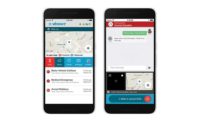Taking Situational Awareness to a New Level: Innovation, Technology and Citizen Stakeholders

We live in a very dynamic world and the nature of what is considered a threat is constantly changing. Over the course of the last decade we’ve seen a blurring of lines between cyber and physical security concerns. Whether it’s the hacking of government employee personal information, the use of social media as a recruitment tool for organizations like ISIS, or the physical devastation as a result of the unexpected terrorist attacks against Paris, it’s clear that security has become top-of-mind worldwide. As a result, organizations are seeking ways in which they can work together, share more information, gain greater situational awareness to react faster, smarter, more efficiently and more effectively to address what’s happening around them.
Situational awareness solutions and Actionable Intelligence®are two pieces of the overall security picture. Collecting the data is simply not good enough in today’s environment. Unless the proper tools are put in place that allow that data to be collected across multiple sources, processed, analyzed and made actionable – it is simply noise and not of great value to anyone especially those tasked with keeping community information, assets and citizens safe.
Information Sharing and Innovation
The good news is that we are starting to make great strides in the area of information sharing. Today’s data-driven environment is transforming the way officials engage with responders, field resources, other public safety stakeholders and the general public. Technology, specifically smartphone technology and the Web, have evolved significantly over the last few years, making this type of citizen engagement more conceivable than ever before.
Security leaders look to engage sophisticated tactics to engage members of the community to support proactive security response and real-time reporting to gain more insight from multiple information sources. With data production expected to be 44 times greater in 2020 than in 2009, city and public safety officials must be able to pull relevant information from multiple systems and apply big data analysis to make sense of it all. This allows officials greater situational awareness and drives faster more efficient response to what’s happening. These situational awareness solutions are designed to take disparate data pouring in from various resources, pull it into a single platform for a unified view, enabling faster, more intelligent decision-making in routine and emergency events. These solutions provide security professionals and operators the insight they need by incorporating unified situation monitoring, dispatch and incident response, live field communications and real-time citizen input.
New functionalities and reporting capabilities incorporate emergency dispatch and help reduce emergency response time, while enhancing end-to-end communications during the course of an incident, which creates a safer environment and optimizes incident management. Other innovations help to relay critical information and multimedia data from an incident, providing field personnel with more real-time, accurate intelligence about an incident before arriving on-site.
Although there are incidents where social media has negatively impacted citizens by putting them at risk, social media is also being used in a positive way to facilitate greater citizen engagement. Today, social media is a tool being used to empower average citizens to participate in the security of their own communities. More so, it is changing the face of security by giving authorities the ability to collaborate with other agencies and the general public when situations occur, which enables a greater level of situational awareness through an “eyes on the street” approach.
Today, information sharing is an essential piece in nearly every digital interaction, and citizen engagement plays an important role in nearly every intelligence-led, problem-solving approach to community safety. Citizens have a vested interest in the communities they live in and it is important to many to have a means to contribute to their community’s safety. By offering a convenient and accessible channel to do so, citizens have the opportunity to engage with minimal effort. By providing critical information and input, citizens help safety officials carry out evidence-based, targeted public safety interventions in a proactive manner to improve citywide safety and security.
With the number of networked systems and the large amount of information available to help security professionals and emergency responders protect and serve citizens, finding the right solution for an organization or city can become daunting. Solutions that help security professionals make sense of the ‘noise’ and gain true actionable intelligence are more important than ever before.
Various resources, such as video surveillance, sensors, facial recognition, systems, tracking and social media are key components in helping to ensure security personnel and officials have all the information they need to recognize patterns or suspicious activity, identify risk and potential threats and respond to incidents quickly and efficiently.
There is no doubt that the nature of what threatens the security of our communities will continue to change and evolve. It is terribly important that we continue to innovate and enhance our counter measures, expand our ability to share information across channels and find new ways to leverage tools that help extend the reach of our security personnel and organization through citizen engagement to drive greater situational awareness. With this intelligence, our responders, field resources and other public safety stakeholders can respond faster, smarter, more efficiently and more effectively to address, or even prevent, future security challenges.
Looking for a reprint of this article?
From high-res PDFs to custom plaques, order your copy today!





